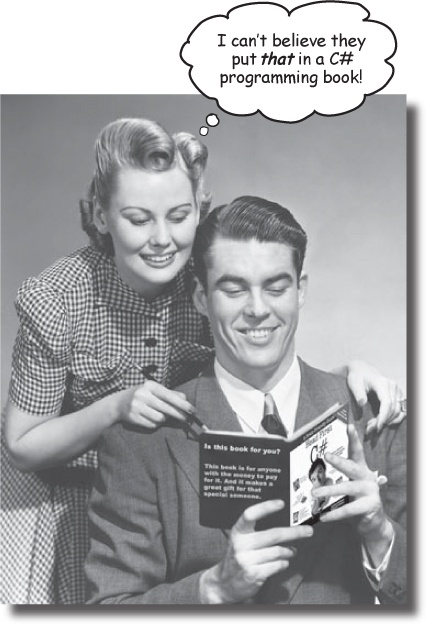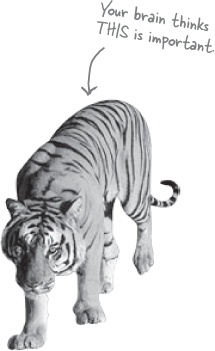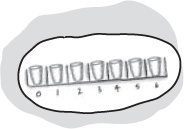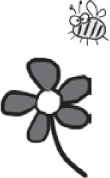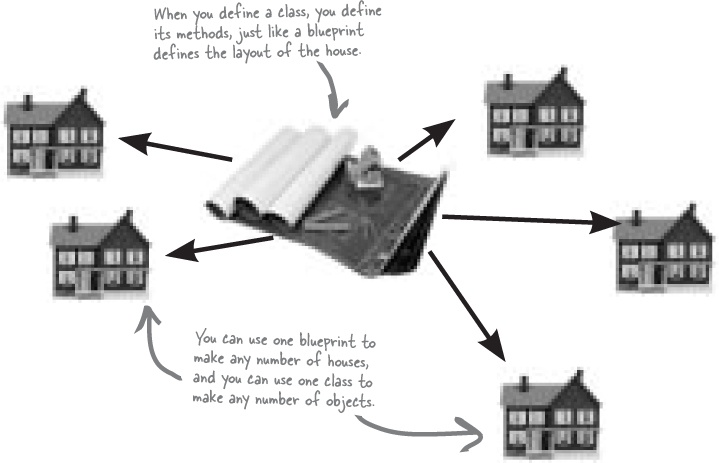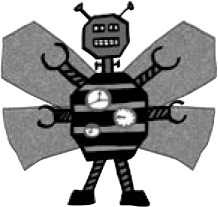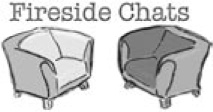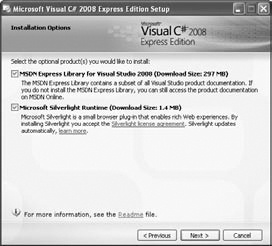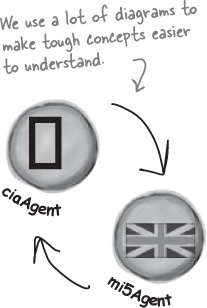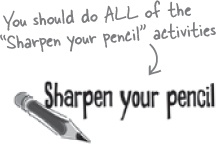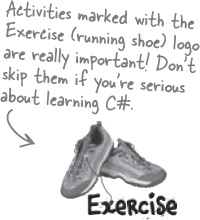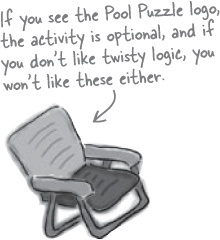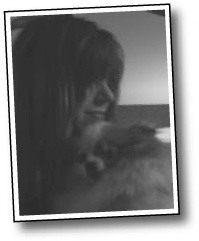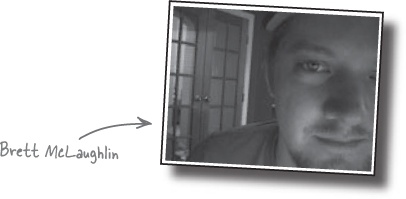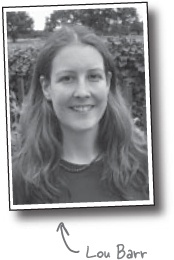How to Use this Book: Intro
Note
In this section, we answer the burning question: “So why DID they put that in a C# programming book?”
Who is this book for?
If you can answer “yes” to all of these:
➊ Do you want to learn C#?
➋ Do you like to tinker—do you learn by doing, rather than just reading?
➌ Do you prefer stimulating dinner party conversation to dry, dull, academic lectures?
this book is for you.
Who should probably back away from this book?
If you can answer “yes” to any of these:
➊ Does the idea of writing a lot of code make you bored and a little twitchy?
➋ Are you a kick-butt C++ or Java programmer looking for a reference book?
➌ Are you afraid to try something different? Would you rather have a root canal than mix stripes with plaid? Do you believe that a technical book can’t be serious if C# concepts are anthropomorphized?
this book is not for you.
We know what you’re thinking.
“How can this be a serious C# programming book?”
“What’s with all the graphics?”
“Can I actually learn it this way?”
And we know what your brain is thinking.
Your brain craves novelty. It’s always searching, scanning, waiting for something unusual. It was built that way, and it helps you stay alive.
So what does your brain do with all the routine, ordinary, normal things you encounter? Everything it can to stop them from interfering with the brain’s real job—recording things that matter. It doesn’t bother saving the boring things; they never make it past the “this is obviously not important” filter.
How does your brain know what’s important? Suppose you’re out for a day hike and a tiger jumps in front of you, what happens inside your head and body?
Neurons fire. Emotions crank up. Chemicals surge.
And that’s how your brain knows...
This must be important! Don’t forget it!
But imagine you’re at home, or in a library. It’s a safe, warm, tiger-free zone. You’re studying. Getting ready for an exam. Or trying to learn some tough technical topic your boss thinks will take a week, ten days at the most.
Just one problem. Your brain’s trying to do you a big favor. It’s trying to make sure that this obviously non-important content doesn’t clutter up scarce resources. Resources that are better spent storing the really big things. Like tigers. Like the danger of fire. Like how you should never have posted those “party” photos on your Facebook page.
And there’s no simple way to tell your brain, “Hey brain, thank you very much, but no matter how dull this book is, and how little I’m registering on the emotional Richter scale right now, I really do want you to keep this stuff around.”
Metacognition: thinking about thinking
If you really want to learn, and you want to learn more quickly and more deeply, pay attention to how you pay attention. Think about how you think. Learn how you learn.
Most of us did not take courses on metacognition or learning theory when we were growing up. We were expected to learn, but rarely taught to learn.
But we assume that if you’re holding this book, you really want to learn how to build programs in C#. And you probably don’t want to spend a lot of time. If you want to use what you read in this book, you need to remember what you read. And for that, you’ve got to understand it. To get the most from this book, or any book or learning experience, take responsibility for your brain. Your brain on this content.
The trick is to get your brain to see the new material you’re learning as Really Important. Crucial to your well-being. As important as a tiger. Otherwise, you’re in for a constant battle, with your brain doing its best to keep the new content from sticking.
So just how DO you get your brain to treat C# like it was a hungry tiger?
There’s the slow, tedious way, or the faster, more effective way. The slow way is about sheer repetition. You obviously know that you are able to learn and remember even the dullest of topics if you keep pounding the same thing into your brain. With enough repetition, your brain says, “This doesn’t feel important to him, but he keeps looking at the same thing over and over and over, so I suppose it must be.”
The faster way is to do anything that increases brain activity, especially different types of brain activity. The things on the previous page are a big part of the solution, and they’re all things that have been proven to help your brain work in your favor. For example, studies show that putting words within the pictures they describe (as opposed to somewhere else in the page, like a caption or in the body text) causes your brain to try to makes sense of how the words and picture relate, and this causes more neurons to fire. More neurons firing = more chances for your brain to get that this is something worth paying attention to, and possibly recording.
A conversational style helps because people tend to pay more attention when they perceive that they’re in a conversation, since they’re expected to follow along and hold up their end. The amazing thing is, your brain doesn’t necessarily care that the “conversation” is between you and a book! On the other hand, if the writing style is formal and dry, your brain perceives it the same way you experience being lectured to while sitting in a roomful of passive attendees. No need to stay awake.
But pictures and conversational style are just the beginning.
Here’s what WE did:
We used pictures, because your brain is tuned for visuals, not text. As far as your brain’s concerned, a picture really is worth a thousand words. And when text and pictures work together, we embedded the text in the pictures because your brain works more effectively when the text is within the thing the text refers to, as opposed to in a caption or buried in the text somewhere.
We used redundancy, saying the same thing in different ways and with different media types, and multiple senses, to increase the chance that the content gets coded into more than one area of your brain.
We used concepts and pictures in unexpected ways because your brain is tuned for novelty, and we used pictures and ideas with at least some emotional content, because your brain is tuned to pay attention to the biochemistry of emotions. That which causes you to feel something is more likely to be remembered, even if that feeling is nothing more than a little humor, surprise, or interest.
We used a personalized, conversational style, because your brain is tuned to pay more attention when it believes you’re in a conversation than if it thinks you’re passively listening to a presentation. Your brain does this even when you’re reading.
We included more than 80 activities, because your brain is tuned to learn and remember more when you do things than when you read about things. And we made the exercises challenging-yet-do-able, because that’s what most people prefer.
We used multiple learning styles, because you might prefer step-by-step procedures, while someone else wants to understand the big picture first, and someone else just wants to see an example. But regardless of your own learning preference, everyone benefits from seeing the same content represented in multiple ways.
We include content for both sides of your brain, because the more of your brain you engage, the more likely you are to learn and remember, and the longer you can stay focused. Since working one side of the brain often means giving the other side a chance to rest, you can be more productive at learning for a longer period of time.
And we included stories and exercises that present more than one point of view, because your brain is tuned to learn more deeply when it’s forced to make evaluations and judgments.
We included challenges, with exercises, and by asking questions that don’t always have a straight answer, because your brain is tuned to learn and remember when it has to work at something. Think about it—you can’t get your body in shape just by watching people at the gym. But we did our best to make sure that when you’re working hard, it’s on the right things. That you’re not spending one extra dendrite processing a hard-to-understand example, or parsing difficult, jargon-laden, or overly terse text.
We used people. In stories, examples, pictures, etc., because, well, because you’re a person. And your brain pays more attention to people than it does to things.
Here’s what YOU can do to bend your brain into submission
So, we did our part. The rest is up to you. These tips are a starting point; listen to your brain and figure out what works for you and what doesn’t. Try new things.
➊ Slow down. The more you understand, the less you have to memorize.
Don’t just read. Stop and think. When the book asks you a question, don’t just skip to the answer. Imagine that someone really is asking the question. The more deeply you force your brain to think, the better chance you have of learning and remembering.
➋ Do the exercises. Write your own notes.
We put them in, but if we did them for you, that would be like having someone else do your workouts for you. And don’t just look at the exercises. Use a pencil. There’s plenty of evidence that physical activity while learning can increase the learning.
➌ Read the “There are No Dumb Questions”
That means all of them. They’re not optional sidebars—they’re part of the core content! Don’t skip them.
➍ Make this the last thing you read before bed. Or at least the last challenging thing.
Part of the learning (especially the transfer to long-term memory) happens after you put the book down. Your brain needs time on its own, to do more processing. If you put in something new during that processing time, some of what you just learned will be lost.
➎ Drink water. Lots of it.
Your brain works best in a nice bath of fluid. Dehydration (which can happen before you ever feel thirsty) decreases cognitive function.
➏ Talk about it. Out loud.
Speaking activates a different part of the brain. If you’re trying to understand something, or increase your chance of remembering it later, say it out loud. Better still, try to explain it out loud to someone else. You’ll learn more quickly, and you might uncover ideas you hadn’t known were there when you were reading about it.
➐ Listen to your brain.
Pay attention to whether your brain is getting overloaded. If you find yourself starting to skim the surface or forget what you just read, it’s time for a break. Once you go past a certain point, you won’t learn faster by trying to shove more in, and you might even hurt the process.
➑ Feel something.
Your brain needs to know that this matters. Get involved with the stories. Make up your own captions for the photos. Groaning over a bad joke is still better than feeling nothing at all.
➒ Write a lot of software!
There’s only one way to learn to program: writing a lot of code. And that’s what you’re going to do throughout this book. Coding is a skill, and the only way to get good at it is to practice. We’re going to give you a lot of practice: every chapter has exercises that pose a problem for you to solve. Don’t just skip over them—a lot of the learning happens when you solve the exercises. We included a solution to each exercise—don’t be afraid to peek at the solution if you get stuck! (It’s easy to get snagged on something small.) But try to solve the problem before you look at the solution. And definitely get it working before you move on to the next part of the book.
What you need for this book:
We wrote this book using Visual C# 2008 Express Edition, which uses C# 3.0 and .NET Framework 3.5. All of the screenshots that you see throughout the book were taken from that edition, so we recommend that you use it. If you’re using Visual Studio 2008 Standard, Professional, or Team System editions, you’ll see some small differences, which we’ve pointed out wherever possible. You can download the Express Edition for free from Microsoft’s website—it installs cleanly alongside other editions, as well as previous versions of Visual Studio.
Read me
This is a learning experience, not a reference book. We deliberately stripped out everything that might get in the way of learning whatever it is we’re working on at that point in the book. And the first time through, you need to begin at the beginning, because the book makes assumptions about what you’ve already seen and learned.
The activities are NOT optional.
The exercises and activities are not add-ons; they’re part of the core content of the book. Some of them are to help with memory, some for understanding, and some to help you apply what you’ve learned. Don’t skip the written problems. The pool puzzles are the only things you don’t have to do, but they’re good for giving your brain a chance to think about twisty little logic puzzles.
The redundancy is intentional and important.
One distinct difference in a Head First book is that we want you to really get it. And we want you to finish the book remembering what you’ve learned. Most reference books don’t have retention and recall as a goal, but this book is about learning, so you’ll see some of the same concepts come up more than once.
Do all the exercises!
The one big assumption that we made when we wrote this book is that you want to learn how to program in C#. So we know you want to get your hands dirty right away, and dig right into the code. We gave you a lot of opportunities to sharpen your skills by putting exercises in every chapter. We’ve labeled some of them “Do this!”—when you see that, it means that we’ll walk you through all of the steps to solve a particular problem. But when you see the Exercise logo with the running shoes, then we’ve left a big portion of the problem up to you to solve, and we gave you the solution that we came up with. Don’t be afraid to peek at the solution—it’s not cheating! But you’ll learn the most if you try to solve the problem first.
We’ve also placed all the exercise solutions’ source code on the web so you can download it. You’ll find it at http://www.headfirstlabs.com/books/hfcsharp/
The “Brain Power” exercises don’t have answers.
For some of them, there is no right answer, and for others, part of the learning experience of the Brain Power activities is for you to decide if and when your answers are right. In some of the Brain Power exercises you will find hints to point you in the right direction.
The technical review team
Technical Reviewers:
When we wrote this book, it had a bunch of mistakes, issues, problems, typos, and terrible arithmetic errors. Okay, it wasn’t quite that bad. But we’re still really grateful for the work that our technical reviewers did for the book. We would have gone to press with errors (including one or two big ones) had it not been for the most kick-ass review team EVER...
First of all, we really want to thank Joe Albahari for the enormous amount of technical guidance. He really set us straight on a few really important things, and if it weren’t for him you’d be learning incorrect stuff. We also want to thank Lisa Kellner—this is our third book that she’s reviewed for us, and she made a huge difference in the readability of the final product. Thanks, Lisa! And special thanks to Jay Hilyard and Daniel Kinnaer for catching and fixing a whole lot of our mistakes, and Aayam Singh for actually going through and doing every one of these exercises before we fixed them and corrected their problems. Aayam, you’re really dedicated. Thanks!
And special thanks to our favorite readers, David Briggs and Jaime Moreno, for going above and beyond the call of duty by finding and reporting many errors that we didn’t catch in the first printing, and to Jon Skeet for going through the whole book carefully and helping us fix a bunch of errors.
Acknowledgments
Our editor:
We want to thank our editor, Brett McLaughlin, for editing this book. He helped with a lot of the narrative, and the comic idea in Chapter 14 was completely his, and we think it turned out really well. Thanks, Brett!
The O’Reilly team:
Lou Barr is an amazing graphic designer who went above and beyond on this one, putting in unbelievable hours and coming up with some pretty amazing visuals. If you see anything in this book that looks fantastic, you can thank her (and her mad InDesign skillz) for it. She did all of the monster and alien graphics for the labs, and the entire comic book. Thanks so much, Lou! You are our hero, and you’re awesome to work with.
There are so many people at O’Reilly we want to thank that we hope we don’t forget anyone. First of all, the Head First team rocks—Laurie Petrycki, Catherine Nolan, Sanders Kleinfeld (the most super production editor ever!), Caitrin McCullough, Keith McNamara, and Brittany Smith. Special thanks to Colleen Gorman for her sharp proofread, Ron Bilodeau for volunteering his time and preflighting expertise, and Adam Witwer for offering one last sanity check—all of whom helped get this book from production to press in record time. And as always, we love Mary Treseler, and can’t wait to work with her again! And a big shout out to our other friends and editors, Andy Oram, Isabel Kunkle, and Mike Hendrickson. And if you’re reading this book right now, then you can thank the greatest publicity team in the industry: Marsee Henon, Sara Peyton, Mary Rotman, Jessica Boyd, Kathryn Barrett, and the rest of the folks at Sebastopol.
Safari® Books Online
When you see a Safari® icon on the cover of your favorite technology book that means the book is available online through the O’Reilly Network Safari Bookshelf.
Safari offers a solution that’s better than e-books. It’s a virtual library that lets you easily search thousands of top tech books, cut and paste code samples, download chapters, and find quick answers when you need the most accurate, current information. Try it for free at http://safari.oreilly.com.
Get Head First C# now with the O’Reilly learning platform.
O’Reilly members experience books, live events, courses curated by job role, and more from O’Reilly and nearly 200 top publishers.
